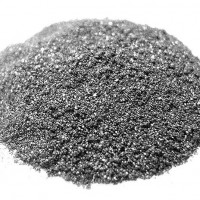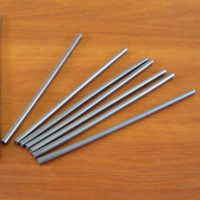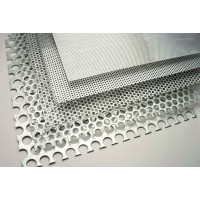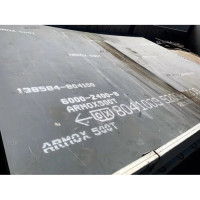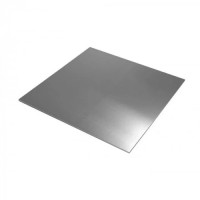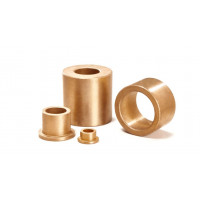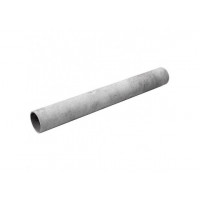Lviv caprolon, fluoroplastic circle, sheet, textolite, fiberglass
Caprolon (polyamide-6 block, PA-6 block) is a structural polymer obtained in the process of anionic polymerization of caprolactam, carried out directly in the mold in the presence of alkaline catalysts and activators.[1]
It is supplied in the form of sheets, rods, blocks or blanks of complex shape. It is used for the manufacture of parts by machining blanks.
Physical and mechanical properties
Caprolon is resistant to hydrocarbons, oils, alcohols, ketones, esters, alkalis and weak acids, soluble in phenols, concentrated mineral acids, formic and acetic acids. The material has good anti-friction properties and high wear resistance.
Caprolon under normal conditions is non-toxic, does not have a harmful effect on the human body [2].
During the mechanical processing of caprolon in the product, the decomposition of the material does not occur, and harmful substances are not released.
At temperatures above 300 ° C, caprolon decomposes with the release of carbon monoxide and ammonia.
Caprolon, whose technical characteristics are quite unique, is used instead of metals. The material is 6 or even 7 times lighter than steel, which indicates that the products are lightweight and high strength. Caprolon is used for the manufacture of bearings that are resistant to corrosion, wear-resistant, low coefficient of friction, among other things, these parts have a self-lubricating effect. Caprolon is used to produce gears, pump blades, impellers, various housings, as well as rollers that form the basis of conveyor belts. Sometimes cutting boards are also made from this material, which are convenient to use in the meat industry.
Types and grades of material
The main types of caprolon:
Casting. The most popular and widespread, simple and cheap to manufacture.
extruded. Polymer with reduced heat resistance, suitable for operation at temperatures up to 100 °C.
Heat resistant. It has increased resistance to heat, the maximum allowable temperature for the operation of such products is 259 ° C.
Food. An environmentally friendly material that undergoes stricter control in terms of hygiene. Suitable for food contact.
With the addition of solid lubricants (most often graphite). Differs in the increased wear resistance. Used for the manufacture of industrial equipment parts. Such elements work quietly, do not need lubrication and are not erased during operation. This is due to graphite dust that protrudes to the surface of the part when friction occurs. Graphite immediately reduces friction.
With the addition of polyethylene or fiberglass. Caprolon, reinforced by the inclusion of PE or fiberglass filler in the production of parts or blanks.
The most popular grades of polymer:
A. For the aircraft industry. Material of small weight and high durability, maintains serious dynamic loadings.
B. For the production of parts for industrial equipment, automobiles, etc. Strong and durable polymer, the most common on the market.
MG (with graphite). Possesses the increased antifrictional properties. The coefficient of friction of such a material is lower than that of products made of conventional caprolon with oil lubrication. The material is more expensive than usual and is used in a narrower field.
MDM (with molybdenum). Polymer with enhanced dielectric properties. It is used where there is a high probability of ignition of an explosive gas mixture (mainly in the gas production and gas processing industry).
Release forms
Raw caprolon is produced in the form of a powder for further casting or extrusion. It enters the market in the form of finished cast parts or blanks. As a rule, this is:
Sheets with a thickness of 6–250 mm and a size of 1 × 1 m (rings and liners are made from them).
Rods up to 150–300 mm in diameter and up to 2 m long.
Bars of different sizes (usually the size is set for a specific part that will be machined from a bar).
Blanks of certain, non-standard shapes for further milling.
The material is recyclable, but virgin parts are stronger and more durable.
Due to its high chemical resistance, caprolon can be used even in difficult conditions and difficult environments. It is widely used in industries such as:
food industry;
aircraft, automobile and mechanical engineering;
energy.
The material is perfect for making:
bearings and other sliding parts;
bushings, guide liners, facings;
valves, rings, flanges;
wheel hubs in carts, trolleys;
pulleys, blocks, rollers, wheels of hoisting mechanisms for heavy loads (with a maximum load of up to 30 tons);
brackets;
sealing elements in separators;
drives in gearboxes;
sprockets, gears, parts of the worm gear;
cutting boards and rotating parts of conveyors for meat and fish processing (for examplefood industry enterprises);
elements of mechanisms for dressing leather at tanneries (reagents working there do not dissolve caprolon);
details of mechanisms for cutting products at confectionery enterprises;
fittings;
electrical insulating parts.
Kaprolon is suitable for use in friction units with loads up to 20 MPa (here they work with a safety margin of 250%).
In many cases, PTFE can be replaced with caprolon and vice versa. But the interchangeability of these materials is limited. Caprolon is more wear-resistant and durable, while fluoroplastic is easier to process and withstands extreme temperatures (for example, the melting point of fluoroplast is 327 °C, caprolon is 225 °C). Therefore, in mass production, the use of these two materials is almost completely separated. Caprolon is produced in the form of sheets and rods. It is used to make a variety of parts when a new part is cut out of a rod or sheet. This material is very resistant to wear and tear and various strong acids. It has good antifriction properties. When heated above three hundred degrees Celsius, this material decomposes. There are many options for using caprolon instead of metal due to its high strength. This material is as much as seven times lighter than steel. It is used to make lightweight bearings that do not wear out, overheat, or lose their original properties for a long time. In cooking, it is used to make cutting boards for meat and vegetables in different colors. They are used to make blades for pumps and rollers for conveyor belts. And also gears that do not wear out or break for a long time due to the high strength of this material. In aviation, caprolon is used to make some parts, as it is a very light material. In the automotive industry, it is used to make some parts for gearboxes and engines. In shipbuilding and the railway industry, it is used to make particularly strong bearings and gears. In electrical engineering, it is used to make electrical insulating materials. It is also used to cut decorative handles for home and camping knives. At a temperature of two hundred and twenty-five degrees Celsius, this material melts. There are cases where it is used instead of fluoroplastic and vice versa, sometimes these materials are interchangeable. This material cannot conduct electricity. In its raw form or in the form of rods and sheets, it is white or beige. When producing sheets, chips on the edges are not allowed. The sheets must be even, with a smooth surface and have the same size. They must not have holes. When working with caprolon, observe safety precautions. Protect your hands with special gloves and your eyes with safety glasses. This material is non-toxic and can come into contact with food, as it is used to make wonderful cutting boards for chefs. It is also easily glued with special superglues to wood and a variety of metals. To increase the antifriction properties of the material, molybdenum is added to this composition. It is very resistant to acetic and formic acid, as well as to various alkalis. Caprolon has such a voltage for destruction within the range from sixty-five to eighty-five mega Pascals. This material has an electrical strength of up to thirty-five kilowatts per millimeter.
No questions about this product, be the first and ask your question.

,sterzhen-700x700.jpg)
